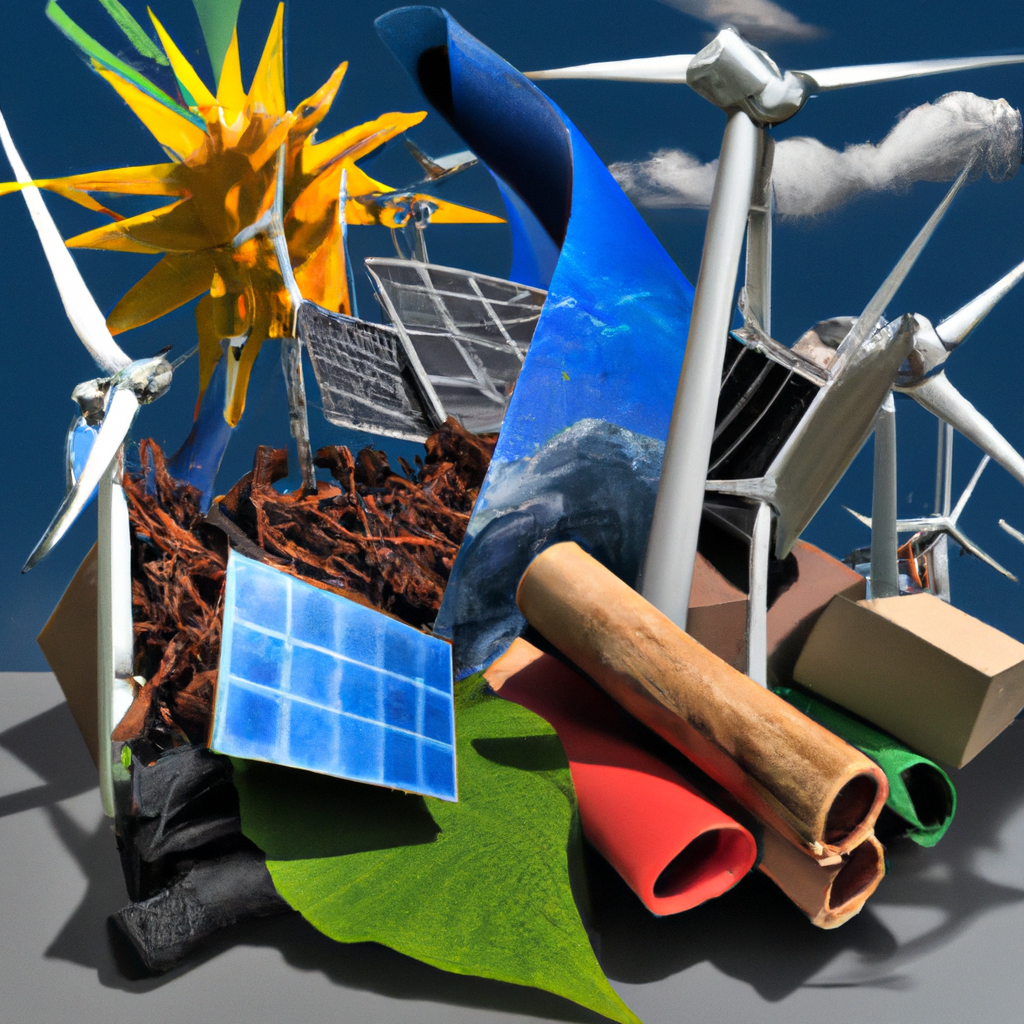In recent years, the world has witnessed a growing concern for the environment and the urgent need to shift towards renewable energy sources. As a result, eco-friendly materials have emerged as a promising solution in the quest for sustainable energy production. This article delves into the potential of these materials and explores innovative solutions that can revolutionize the renewable energy sector.

The Rise of Eco-Friendly Materials
Understanding the Importance of Eco-Friendly Materials
Eco-friendly materials, also known as sustainable materials, are those that have minimal impact on the environment throughout their lifecycle. They are sourced, produced, used, and disposed of in a way that minimizes harm to the ecosystem. The importance of eco-friendly materials lies in their ability to reduce carbon emissions, conserve natural resources, and mitigate the negative effects of traditional energy production methods.
Exploring Different Types of Eco-Friendly Materials
- Solar Panels: Solar panels, made from photovoltaic cells, harness the power of sunlight and convert it into electricity. These panels are made using materials such as silicon, cadmium telluride, and copper indium gallium selenide. Solar panels have gained popularity due to their efficiency, durability, and low maintenance requirements.
- Wind Turbines: Wind turbines utilize the kinetic energy of wind to generate electricity. The blades of wind turbines are typically made from fiberglass, carbon fiber, or other lightweight materials. These materials allow for efficient energy conversion while ensuring the durability of the turbines.
- Hydroelectric Power: Hydroelectric power harnesses the energy of flowing or falling water to generate electricity. Dams are constructed to store water, which is then released to rotate turbines connected to generators. Eco-friendly materials, such as concrete and steel, are used in the construction of dams to ensure their structural integrity and longevity.
- Geothermal Systems: Geothermal systems utilize the natural heat from the Earth’s core to generate electricity or provide heating and cooling for buildings. Pipes made from high-density polyethylene (HDPE) are used to circulate a heat transfer fluid, transferring the heat to a power plant or a building’s heating system.
- Biomass Energy: Biomass energy is generated from organic materials, such as wood, agricultural residues, or dedicated energy crops. These materials are burned or converted into biogas through anaerobic digestion. The resulting energy can be used for heating, electricity generation, or even fuel for vehicles.
Innovative Solutions for Renewable Energy
Advancements in Solar Energy
- Perovskite Solar Cells: Perovskite solar cells have gained attention in recent years due to their high efficiency and low production costs. These cells use a perovskite crystal structure to capture sunlight and convert it into electricity. Researchers are continuously working to improve the stability and scalability of perovskite solar cells for widespread commercial use.
- Solar Paints: Solar paints offer a novel approach to solar energy generation by incorporating light-absorbing particles into a paint-like material. When applied to surfaces, such as buildings or cars, these paints can convert sunlight into electricity. This innovative solution has the potential to transform everyday objects into energy-generating structures.
Advancements in Wind Energy
- Vertical Axis Wind Turbines (VAWTs): VAWTs present an alternative design to traditional horizontal axis wind turbines. These turbines are more compact and can be installed in urban areas where space is limited. VAWTs are also quieter and less prone to bird collisions, making them an eco-friendly option for wind energy generation.
- Floating Wind Farms: Floating wind farms are offshore wind installations that are not fixed to the seabed. These farms can be deployed in deep waters, where traditional fixed-bottom wind turbines are not feasible. By utilizing floating platforms and advanced mooring systems, wind energy can be harnessed in previously untapped areas, expanding the reach of renewable energy.
Advancements in Hydroelectric Power
- Run-of-River Systems: Run-of-river systems offer a sustainable approach to hydroelectric power generation. Unlike traditional dams, run-of-river systems do not require large-scale reservoirs, minimizing ecological disruption. These systems divert a portion of a river’s flow through turbines, generating electricity without significantly altering the natural flow of the river.
Advancements in Geothermal Energy
- Enhanced Geothermal Systems (EGS): EGS technology aims to unlock the vast potential of geothermal energy by creating artificial reservoirs in deep, hot rock formations. By injecting water into these reservoirs, steam is produced, which can then drive turbines to generate electricity. EGS has the potential to expand geothermal energy production to regions currently unsuitable for conventional geothermal systems.
Advancements in Biomass Energy
- Biofuels from Algae: Algae-based biofuels offer a renewable alternative to fossil fuels. Algae can be cultivated in ponds or bioreactors and can produce oils that can be processed into transportation fuels. Algae biofuels have the potential to reduce greenhouse gas emissions and decrease reliance on finite fossil fuel resources.
Conclusion
As the world transitions towards a more sustainable future, the potential of eco-friendly materials in the renewable energy sector cannot be ignored. From solar panels and wind turbines to hydroelectric power and geothermal systems, these materials offer innovative solutions that can revolutionize energy production. Advancements in solar energy, wind energy, hydroelectric power, geothermal energy, and biomass energy further amplify the potential of eco-friendly materials. By embracing these innovations and investing in their development, we can unleash the full potential of renewable energy and pave the way for a greener, more sustainable world.